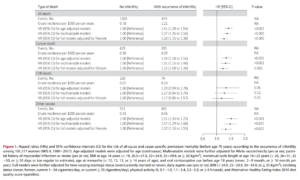https://www.gwern.net/Embryo%20selection#counteracting-dysgenics
Gwern has a very long and detailed post/page on embryo selection and related matters. You should definitely read it. He has just added a new section on counteracting dysgenics — the genetic evolution of undesirable traits — and asked for my comments/thoughts.
The background for the discussion are the recent genomic findings supporting dysgenic claims made by Woodley, Lynn, Meisenberg etc. To me these findings are not surprising as all, as I considered the case proven using the non-genomic data. The nice thing about genomic data is that it allows more precise and direct estimates of the magnitude of dysgenics, as well as of course the ease of estimating the selection across all traits in a sample provided that one has genomic models for them. The evolution of one trait does not solely depend on selection on that trait, but also selection on genetically correlated traits (analogous to indirect range restriction in employment testing).
However, given the early stages of our understanding of the genetic architecture of general cognitive ability (GCA), our ability to predict trait levels from DNA is not quite good yet. So far, so best we have achieved in terms of genomic prediction is a correlation of about .30 with educational achievement (this trait correlates ~.80 with GCA). In examining the magnitude of dysgenics for GCA, one has to take this non-perfect predictive validity into account, as well as confounders such as survival bias in the datasets used. Accounting for survival bias is not easy I think.
The point of Gwern’s new comments is to consider how we need to select for GCA solely to counteract the dysgenic selection for this trait. For embryo selection, this problem can be split into two parts: how prevalent embryo selection must be and how effective it must be. The latter can be estimated from available data, but the first is a task for the Good Judgment Project. Gattaca was in many ways prescient.
Estimating of effectiveness
Gwern goes on to do some quick estimates of how effective embryo selection is assuming various parameters for uptake, eggs per extraction, and genomic prediction validity. Uptake of IVF — an essential part of embryo selection — is currently around 1% in the USA. For genomic prediction validity, in general, the hardest traits are those that are difficult to predict from genomic data, in this case meaning those with low heritability, strongly non-additive heritability or primarily rare variation-based heritability which is difficult to build good predictive models for.
If one has to rely on phenotype selection, the trait distribution also matters a lot. A trait like schizophrenia which is highly heritable (~80%), but which is very rare is hard to select against effectively. Even if we prevented the entire affected population from breeding, this would also reduce the prevalence by about 5%. This reminds me trying to weed out recessive disorders in a population, which is also very ineffective when based on phenotypes. For continuous such as GCA or semi-continuous traits such as educational attainment, the phenotype method will work alright.
Gwern estimates that we only the top 33% were allowed to breed, GCA would increase by about 12.93 IQ per generation. However, he seems to have made two errors. First, the use of .66 instead of 2/3 (.666…) in the simulation for estimating the impact of selection for GCA. Second, the use of a heritability of .80 in the same equation. The breeder’s equation takes the additive heritability of a trait. This value seems unlikely to be .80 for GCA, values .50-.71 are usually assumed for this trait. If we use .60, we get a predicted gain of 9.82 IQ. Still very large.
Politics
Regular phenotype based selection is definitely politically infeasible to implement insofar as it involves putting restrictions on who breeds. This is essentially because the past use of sterilization programs is very, very unpopular, presumably because mumble mumble Nazi. If we are to be realistic, one will have to think of non-coercive approaches. Some such approaches involve creating economic incentives to increase the relative fertility of persons with better genomes. This could involve money transfers for children based on indicators of genomic quality, tax cuts and so on. Any such proposal would presumably immediately be attacked on grounds that it increases economic dispersion by giving benefits — directly or indirectly — to richer people (who have higher quality genomes). As such, this does not seem to be a very promising policy route to pursue.
The most promising route to pursue — it seems to me — is to try to establish government funding for reproductive genomics science, and when we get companies offering such services, to establish government funding for having it done. Optimally, to make it free or even give money for poor people to use them. History shows that uptake of new technologies is slowest among the poorer and lower GCA population, and research shows that this population is also the most costly in terms of social resources. As such, making it a prime target for genomic interventions seems a good idea. Paying prospective parents who poor quality genomics — low GCA, bad temper, lazy, obese, suffers of diabetes etc. — to use such interventions might save a lot of money in the future.
